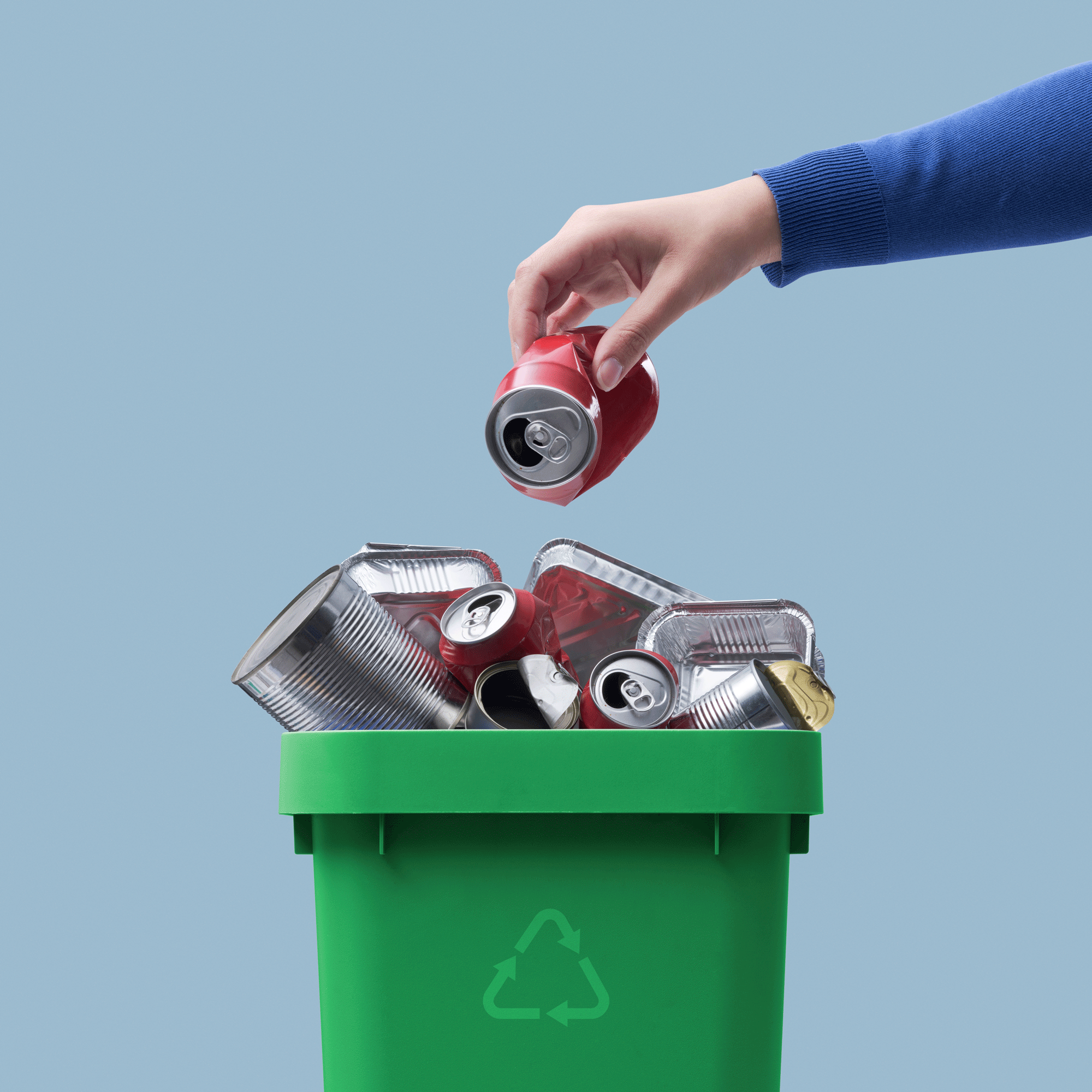
Stokkete/Shutterstock
This article appeared in the January 2025 issue of Resource Recycling. Subscribe today for access to all print content.
Across all consumer goods categories, the U.S. is striving to limit packaging waste and to slow the flow of landfill contributions. Regulators and environmentalists know that time is running out to combat climate change and that moving from a linear to circular model is one of the most effective strategies for preserving materials, reducing resource consumption and decreasing production-related emissions. Yet recycling rates in the U.S. continue to fall short of their potential — largely due to a lack of access and understanding for consumers. This raises the question: If we could simply improve consumer recycling habits of consumers for even one type of packaging, how much could we shift future recycling rates and landfill volumes?
Aluminum as a clear avenue
The beverage can serves as a package with unique opportunity for moving the needle, given its market-ready path toward a greater circular economy. While most modern consumers know that the beverage can is a recyclable item, many do not understand just how impactful that recyclability is in terms of the bigger picture. Used beverage cans are able to be recycled from an empty can to a new can on the shelf in as few as 60 days — a remarkable turnaround that not only saves precious materials from landfill but also saves more than 90% of the energy required in production using virgin materials.
Aluminum cans are also one of the highest-valued formats in the recycling stream given the fact that they can be recycled an infinite number of times without loss of properties like strength and durability. In fact, the Can Manufacturers Institute says that the profit from aluminum beverage cans effectively enables the entire recycling system to operate — typically accounting for more than 33% of the revenue at an average MRF, more than any other single material commodity.
Unfortunately, the majority of consumers are unaware of the importance of UBCs for recycling systems and are not always committed to making responsible choices for material disposal, leaving a tremendous opportunity gap for greater collection.
Creating care and commitment within consumers
While there are numerous ways to make beverage can recycling easier for consumers, there is no action without buy-in. Consumers must feel connected to the products they are using as well as
personally responsible for their choices in order to develop new, more productive habits.
With this in mind, driving consumer education about the damaging effects of landfill waste and resource consumption on the future of our planet, as well as the benefits of properly disposing of key packaging formats like the beverage can, helps to drive more mindful behavior and long-term stewardship.
When a consumer knows that the way they interact with just one beverage can plays a tangible role in a potential environmental outcome, they are more apt to do their part.
Often this education can be done in tandem with localized events where can collection is active and accessible. Some examples include:
- Sponsoring contests at sporting events: Various minor league teams around the U.S. have received sponsorship support from manufacturers and beverage brands to hold a collection contest of all used beverage packaging in stadium and arena stands, incentivizing responsible disposal and recycling on-site while providing longer-term education and reminders to all attendees along the way.
- Hosting competitions at schools: CMI has led a One Million Can Challenge with elementary schools in key regions of the U.S. to drive awareness of the importance of UBC collection not only with families and communities but with the younger generation, who can develop impactful habits early on.
- Creating greater accessibility in high-consumption areas: Metal packaging industry initiatives like Every Can Counts continue to meet consumers where they are, placing recycling ambassadors at local festivals, community parks, academic institutions and other high-traffic areas where passersby can be taught to be more thoughtful about recycling in relation to their daily activities and lifestyles.
Strength in numbers
Ultimately, when it comes to increasing national recycling rates, it is imperative we remember that small actions can create significant impact. Focusing on one substrate, and partnering with one school or one neighborhood to drive more awareness, can be part of a much larger patchwork of efforts happening across the U.S. With the mindset that no one initiative is too minor, we stand a chance to advance the circular economy and foster a much healthier environment long-term.
Jennifer Bogs is a global director of sustainability at Crown overseeing the strategy and implementation of the company’s sustainability program at approximately 400 locations in 40 countries while leading a global team of sustainability professionals. She has 20-plus years’ experience in the environmental field and 9-plus years of experience in sustainability.
The views and opinions expressed are those of the author and do not imply endorsement by Resource Recycling, Inc. If you have a subject you wish to cover in an op-ed, please send a short proposal to [email protected] for consideration.

